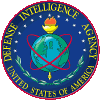

The Central People's Committee, as the executive decisionmaking body, is the highest overseer of government. It consists of the president, vice presidents, and other Politburo members. This body combines executive, judicial, and legislative functions and provides guidance to the Administrative Council, the highest administrative arm of the government. The Administrative Council --- whose members include the premier, vice premiers, and ministers --- functions like a cabinet.
As secretary general of the Central Committee, Kim Il-song actually rules the Central Committee. This committee then selects 30 members that form the Political Bureau (Politburo). The Standing Committee, a group of three to five Politburo members, holds the ultimate power. The Politburo shares policymaking responsibility for military affairs with the Military Affairs Committee of the Korean Workers' Party, both of which Kim Il-song heads.
In the government, the Ministry of the People's Armed Forces is responsible for overseeing the military. The General Staff Department and Rear Services General Bureau of the Ministry of the People's Armed Forces (MPAF) prepare annual budgets for the armed services under direction from the Politburo and Military Affairs Committee using information on weapons and equipment from national and corps commands. The proposed budget is approved by the Military Affairs Committee, reviewed by the National Planning Committee, and codified by the Supreme People's Assembly, North Korea's nominal legislature.
Party Control of the Armed Forces
The Korean Workers' Party controls the military through political corps down to the company level. Two MPAF
departments share responsibility for ensuring KPA personnel loyalty. The Political Department controls
political and ideological training, ensuring military commanders follow correct procedures for training,
discipline, and administration. The Political Security Department oversees military personnel surveillance,
including political and command officers. Questionable political reliability can result in arrest and discharge. A
discharge for political reasons severely restricts future opportunities for civilian employment and education and
prompts civilian security agency surveillance.
Military Organization
The General Staff Department controls all national combat commands. Major combat commands include all
corps, the Light Infantry Training Guidance Bureau, the Reconnaissance Bureau, the Navy, the Air Force, and
some combat support units. Artillery and mechanized commands are responsible for administration, logistics,
and training for the field artillery, air defense artillery, armor, and mechanized infantry units. Corps commands
plan wartime operations using directives from the General Staff Department. The Korean People's Army is a
mobile, well-trained fighting force. From a total population of only 21 million, North Korea can field the fifth
largest armed force in the world. A trained reserve force of up to 5 million augments the Army of about 1 million
active duty personnel. The ground maneuver forces include 30 infantry divisions, 1 truck-mobile division, 22 to
26 reserve divisions, 18 reserve brigades, 15 armored brigades, 20 motorized and mechanized brigades, 4
independent infantry brigades, and 22 special operations brigades.
These forces are equipped with about 3,500 tanks, 4,000 armored personnel carriers, 3,000 towed and 5,400 self-propelled artillery pieces, and over 2,000 multiple rocket launches. The 80,000-member Air Force provides air support. Combat aircraft include 82 bombers and more than 700 jet fighters (including the MiG-23/FLOGGER, the MiG-29/FULCRUM, and the Su-25/FROGFOOT). Approximately 250 An-2/COLTs, 1950s vintage biplanes, comprise most of the air transport fleet. Although old, these aircraft are well-suited to their mission and can deliver over 2,500 troops in a single lift.
The North Korean Navy has two fleets, operating from a total of eight major locations on both coasts. Its 60,000 personnel operate 24 submarines, 1 frigate, 388 patrol and coastal combatants, and 194 amphibious craft. The Navy can move over 6,000 troops in a single sealift.
To support military options, the North has established additional combat support units and a large supply of war reserves.
Tank, motorized infantry, and self-propelled artillery corps are located forward, increasing defensive effectiveness and making them more responsive as exploitation forces. This forward positioning of infantry, armored, and artillery units near the South Korean border eliminates many attack warning indicators, making defense against a North Korean attack more difficult.
